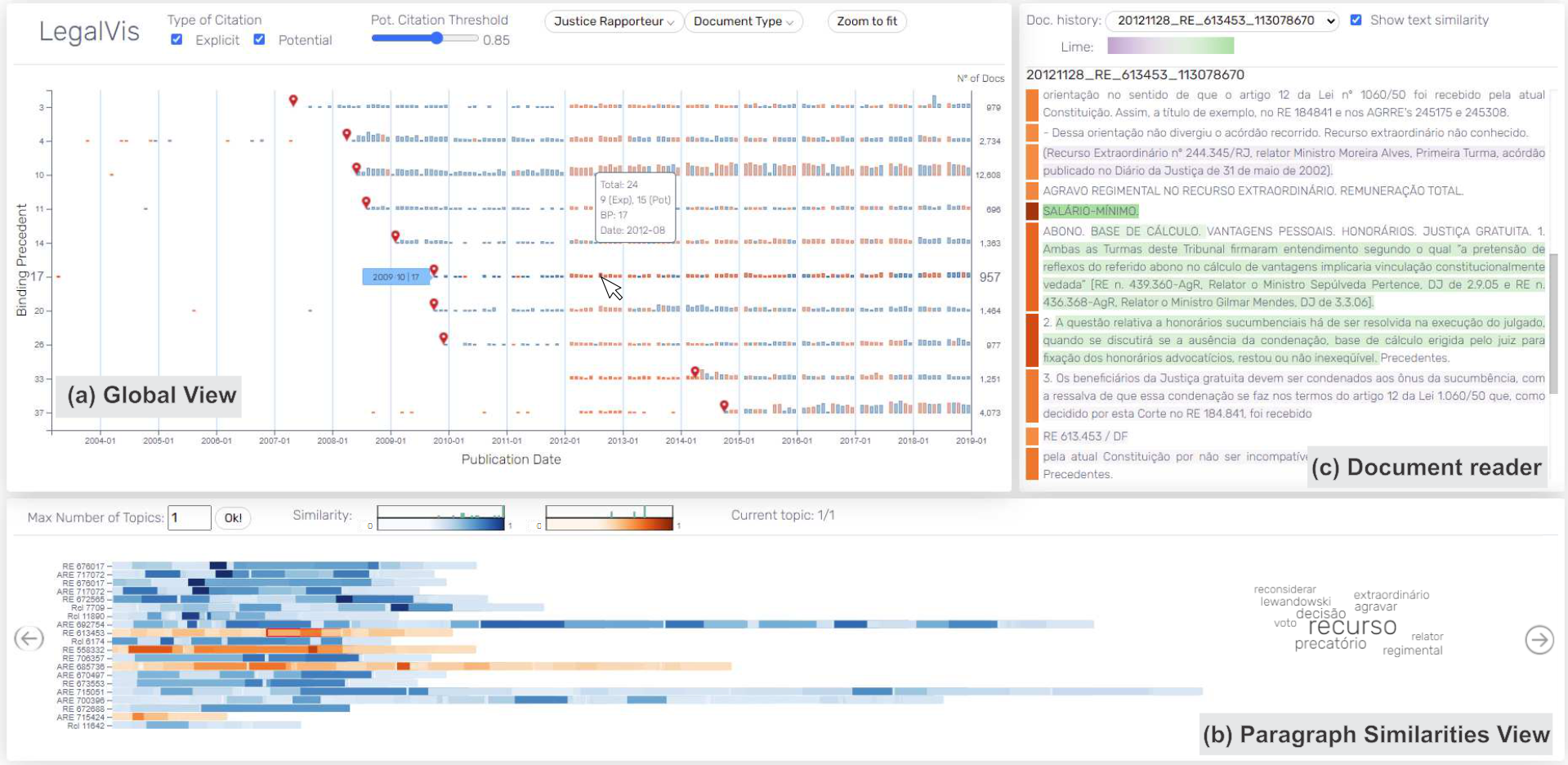LegalVis: Exploring and Inferring Precedent Citations in Legal Documents
Lucas E. Resck, Jean R. Ponciano, Luis Gustavo Nonato, Jorge Poco
View presentation:2022-10-20T21:09:00ZGMT-0600Change your timezone on the schedule page
2022-10-20T21:09:00Z

Prerecorded Talk
The live footage of the talk, including the Q&A, can be viewed on the session page, Text, Language, and Image Data.
Fast forward
Keywords
Legal Documents, Visual Analytics, Brazilian Legal System, Natural Language Processing
Abstract
To reduce the number of pending cases and conflicting rulings in the Brazilian Judiciary, the National Congress amended the Constitution, allowing the Brazilian Supreme Court (STF) to create binding precedents (BPs), i.e., a set of understandings that both Executive and lower Judiciary branches must follow. The STF's justices frequently cite the 58 existing BPs in their decisions, and it is of primary relevance that judicial experts could identify and analyze such citations. To assist in this problem, we propose LegalVis, a web-based visual analytics system designed to support the analysis of legal documents that cite or could potentially cite a BP. We model the problem of identifying potential citations (i.e., non-explicit) as a classification problem. However, a simple score is not enough to explain the results; that is why we use an interpretability machine learning method to explain the reason behind each identified citation. For a compelling visual exploration of documents and BPs, LegalVis comprises three interactive visual components: the first presents an overview of the data showing temporal patterns, the second allows filtering and grouping relevant documents by topic, and the last one shows a document's text aiming to interpret the model's output by pointing out which paragraphs are likely to mention the BP, even if not explicitly specified. We evaluated our identification model and obtained an accuracy of 96%; we also made a quantitative and qualitative analysis of the results. The usefulness and effectiveness of LegalVis were evaluated through two usage scenarios and feedback from six domain experts.